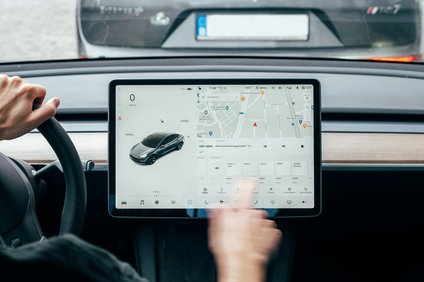Research - 13.11.2019 - 00:00
Study shows: Swiss mobility players are now called upon to take action
The new study by PwC, asut and the CEMS Master Programme in International Management at the University of St.Gallen shows that the Swiss transport system is increasingly reaching its limits. The demand for resources to expand infrastructure and services, but also for their smooth operation, requires extensive investments – both now and in the future.

13 November 2019. Passenger transport operations have increased by more than 65 per cent (in passenger kilometres) since the year 2000 in Switzerland. On top of this, the Swiss people have spent more than 1,000 days in traffic jams in total over the past year. The new study by PwC, asut and the CEMS Master Programme in International Management at the University of St.Gallen shows that the Swiss transport system is increasingly reaching its limits. The demand for resources to expand infrastructure and services, but also for their smooth operation, requires extensive investments – both now and in the future.
New technologies and competitors are creating a stir in the mobility market
The sharing economy is developing rapidly and is predicted to account for around 50 per cent of the market by 2025, up from 6 per cent in 2013. New technologies are bringing novel solutions, but also additional competitors with extensive expertise in IT, such as Amazon and Alphabet, which are penetrating ever more into the mobility market. Investments in mobility start-ups over the last eight years have exceeded the 200-billion-dollar mark, whereby around 90 per cent of these investments are down to precisely these sorts of technology companies, as well as venture capitalists and private equity firms.
Ever more complex mobility demands a networked ecosystem
New and sometimes contradictory customer requirements (e.g. increased demand for mobility vs. increasing environmental awareness) and customers’ changed user behaviour are making the market ever more complex for established providers. Customers are demanding consistent, convenient and personalized services – regardless of the provider. The market participants are increasingly trying to manage these demands single-handedly, which is driving up costs and complexity for the system overall and doing little to ensure customers’ changing needs are met.
If we are to get to grips with this increasing complexity and new competitive situation, the study shows, then Switzerland’s current mobility system needs to shift towards an ecosystem. The current fragmentation of the mobility landscape and the lack of readiness among established players to work together demonstrate how the Swiss mobility sector still lacks the characteristics of an ecosystem. Most significantly, there is no overarching, binding vision for mobility. “The development of an analogue and digitally interconnected mobility ecosystem – which we don’t have right now – is essential if we are to tackle current and future challenges”, says Gabriele D’Achille, Head of Transportation & Logistics at PwC Switzerland.
Seven main thrusts to overcome existing hurdles
The fact that Switzerland is still a long way from having an interconnected mobility ecosystem is down to multiple existing barriers. In order to keep pace with the technological developments, there is a need to take action, most importantly concerning the regulation and overriding governance of the mobility system. On top of this, there needs to be further development of the financing system and public services, of the fostering of competition and innovation, and of data exchange. If these crucial barriers and others are not coherently tackled and overcome by the players in the Swiss mobility market, then the latter will, for the time being, fail to profit from the advantages of an interconnected mobility ecosystem.
It is possible to identify seven main thrusts, which the study supplements with recommendations for action aimed at helping overcome barriers and paving the way towards a future-defining ecosystem.
- Defining a nationwide vision and governance for mobility
- Creating incentives to participate in a mobility ecosystem
- Facilitating exchange of mobility data
- Orienting existing transport infrastructures towards interconnected mobility
- Establishing collaborations and partnerships on multiple levels
- Driving digital transformation, business modelling and innovations
- Establishing a competence initiative on “future mobility”
You can download the study in PDF format here.
Image: AdobeStock / Mr.Note19
More articles from the same category
Discover our special topics











